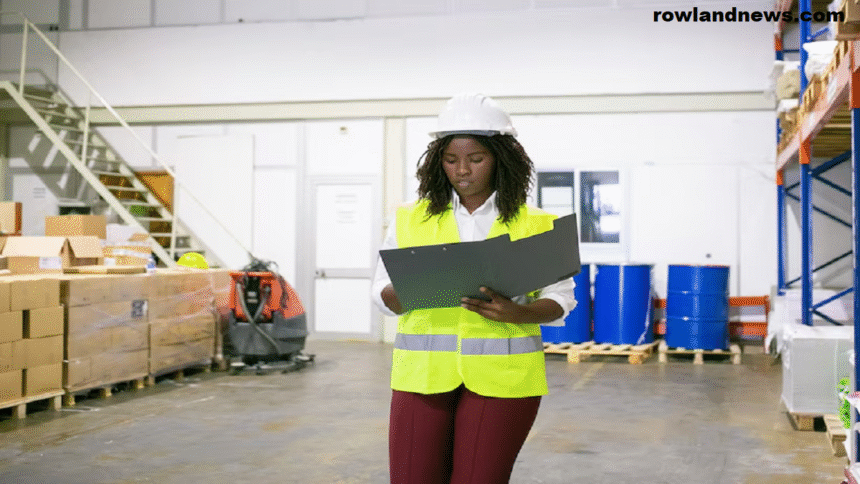Welcome to the AI-Driven Supply Chain Era
The world’s distribution network is the main thrust of modern civilization. It covers nearly every kind of industry, from putting food on supermarket shelves to ensuring that factories don’t grind to a halt due to a lack of parts. So it’s vulnerable to the ravages of war or inefficiencies.
Artificial intelligence steps in.
AI is much more than just a buzzword in the boardroom in 2025. Instead, AI in supply chain management is a fully integrated force that shapes how articles are manufactured, moved, and delivered to consumers’ doors worldwide. With machine learning, predictive analytics, and autonomous systems, AI-powered supply chains are now faster, smarter and more resilient than ever before.
Here, then, is a detailed look at just how this change is playing out—and what repercussions it holds for both companies and the public.
What Is AI in Supply Chain Management?
At its most basic level, artificial intelligence involves machines that mimic human brainwork — learning from data, seeing patterns, making decisions and even adjusting over time. In supply chain management (SCM), AI applications include such tools as:
- Machine learning algorithms to forecast demand
- Computer vision for an inventory check
- Natural Language Processing (NLP) to analyze logistics data
- Autonomous robots and vehicles that can handle materials and make deliveries
Predictive Analytics: Seeing the Future Before It Happens
This is game-changing predictive analytics, driven by AI.
Modern systems do not rely solely on historical sales data. Instead, they absorb real-time data from various sources, such as weather forecasts, social media trends, and geopolitical changes, to predict future demand with uncanny accuracy.
Real-life example:
Retail behemoth Walmart uses AI to estimate product demand just before a catastrophe. As a hurricane approaches, the system automatically ramps up inventory on items such as bottled water and flashlights, based on past storm behavior and current data. This proactive approach ensures that when it counts, shelves will stay stocked.
Smart Warehousing: Robots at Work
We are now in the age of “lights-out” warehouses, where operations continue even after the lights are turned off and people have gone to sleep.
Innovative warehousing with AI-powered robots now performs:
- Picking and packing orders
- Sorting and stocking inventory
- Navigating aisles with LIDAR and machine vision
These systems utilize AI in supply chain management to minimize errors and improve efficiency.
For example, by using Kiva robots (now Amazon Robotics) during Amazon’s warehouse operations, the total time to warehouse an entire shipment has been cut by 20%. Amazon’s fulfillment centers for 2025 are largely self-operating.
Real-Time Visibility and Risk Management
Traditional supply chains often operate in silos, making risk management in supply chains challenging. AI can help by unifying data feeds from suppliers, logistics firms, and retailers, thereby enabling real-time visibility.
Now, when there’s a delay in China, your operations team in Chicago is immediately notified and can reroute or replan as required.
AI can also be used both to foresee potential risks and to take measures that help reduce them:
- Port jams
- Supplier insolvencies
- Political interruptions
- Natural disasters
Case in point: Maersk, one of the world’s largest shipping companies, uses IBM Watson to analyze global trade patterns and identify possible pitfalls. This early warning system is already enabling them to adjust courses and resources in real-time.
🔗 Learn more on IBM’s blog.
The Next Step in Autonomous Transportation
Autonomous vehicles such as self-driving trucks and delivery drones are no longer science fiction. By 2025, Tesla, Waymo, and Einride are expected to be operating autonomous pods for goods distribution.
These AI-driven supply chain systems:
- Reduce fatigue-related errors
- Optimize delivery routes
- Operate 24/7
- Minimize emissions
Einride’s electric, driverless pods are collecting data on the extent of human intervention needed, which is close to zero, and offer a glimpse into sustainability in supply chain operations.
Constructing Sustainable Logistics and Reducing Waste
AI is more than just a lifesaver; it also represents a significant ally for sustainability in supply chain operations.
By improving forecasting, reducing overproduction, and minimizing empty miles, AI enables firms to reduce waste and lower their carbon emissions.
According to McKinsey & Company, AI-powered supply chains boost forecasting accuracy by 50%. This yields leaner operations and a lower environmental impact.
In 2025, sustainability is no longer optional. AI in supply chain management enables businesses to be eco-conscious and profitable.
Read Also: How Blockchain is Revolutionizing Supply Chain Transparency
Challenges and Reflections
Of course, AI’s ascent in SCM comes with challenges:
- Data security and data privacy must be safeguarded
- High implementation costs can be a barrier for small firms.
- Labor roles are shifting; training is essential.
- Ethical concerns must be addressed.
Yet these are stepping stones, not roadblocks, to adopting AI in supply chain management.
The Future is Today
Whether you’re a business leader or an informed consumer, artificial intelligence is changing the way global trade functions.
AI in supply chain management is:
- More responsive
- More resilient
- More sustainable
- More intelligent
The world’s goods flow smoothly with AI-powered supply chains, making our global infrastructure stronger than ever.
Final Thoughts
In 2025, AI in supply chain management is no longer optional—it’s foundational.
Companies that embrace this transformation reduce costs, improve customer satisfaction, and stay competitive in an increasingly unpredictable world. The future of supply chain is not coming, it’s already here.
Curious how AI can improve your business logistics? Begin by auditing your current systems and exploring where intelligent automation can add new value.
Like this post?
Sign up for our newsletter to get more insights on technology, logistics, and innovation. Or share this article with your peers, especially if they love AI in supply chain management as much as you do.
